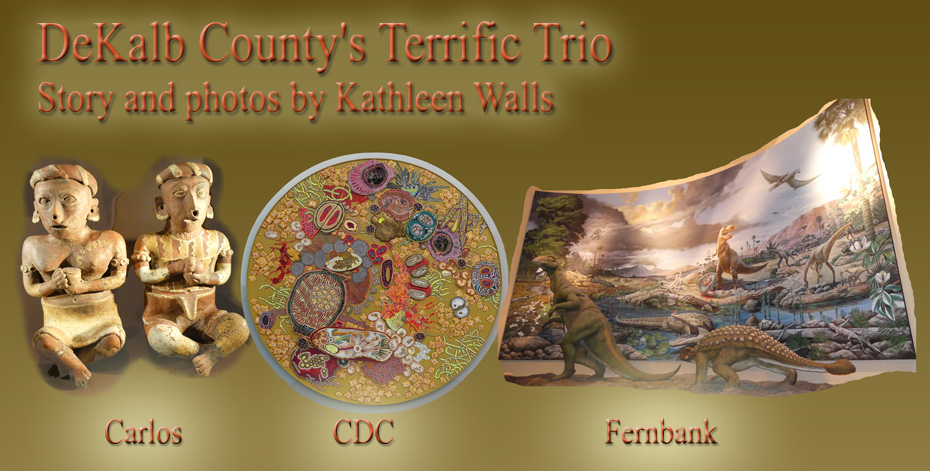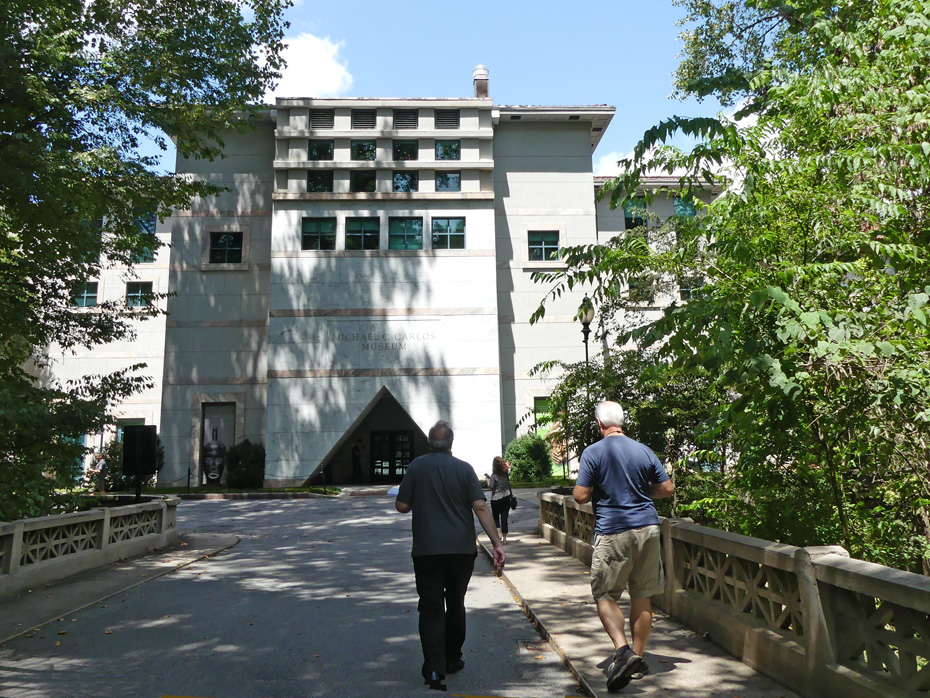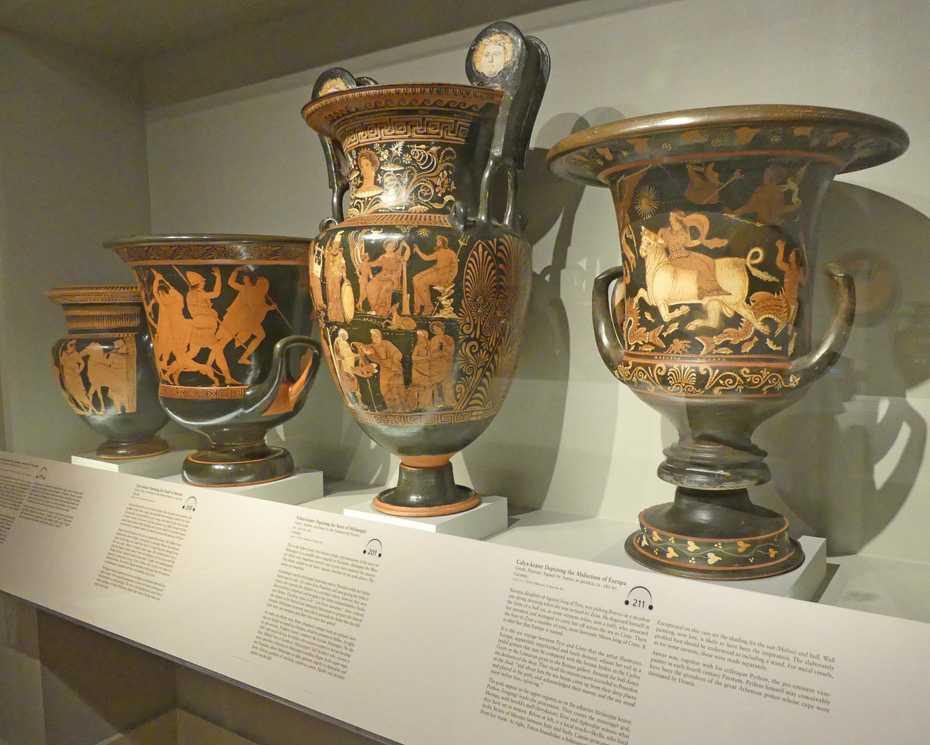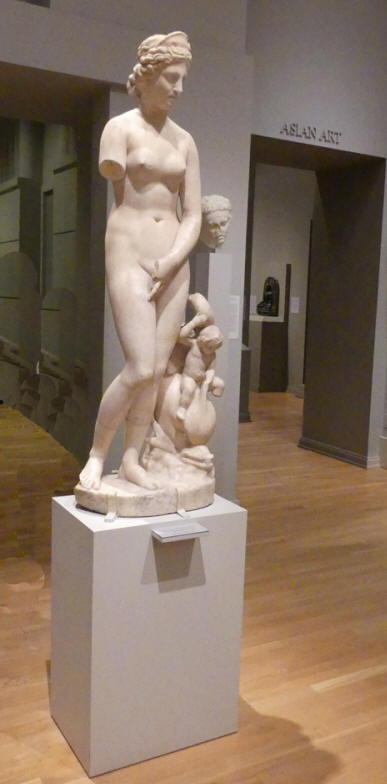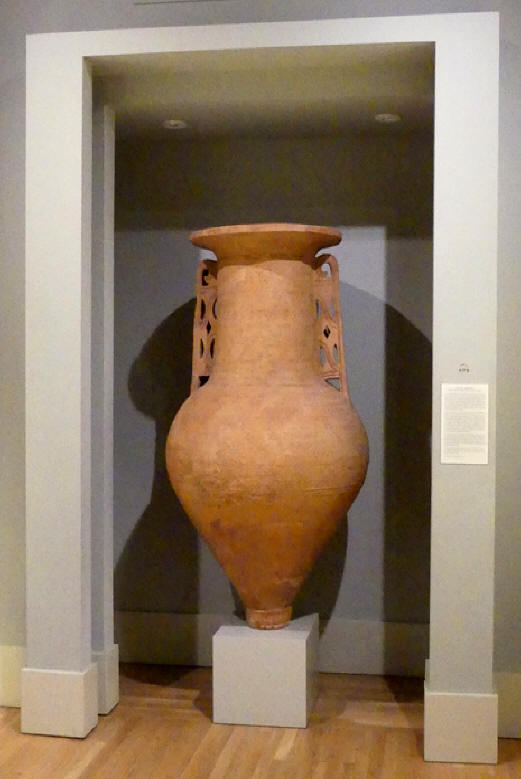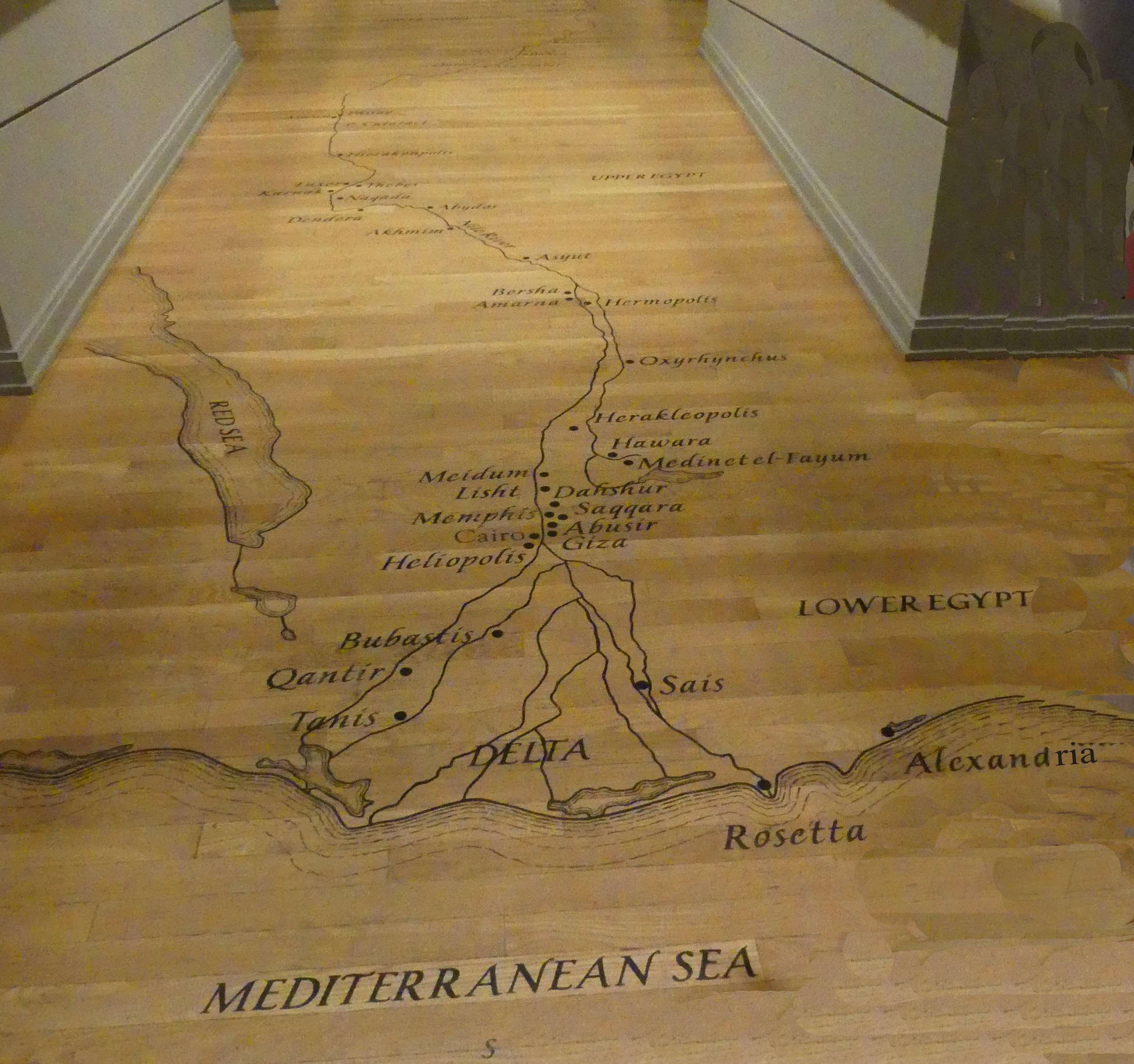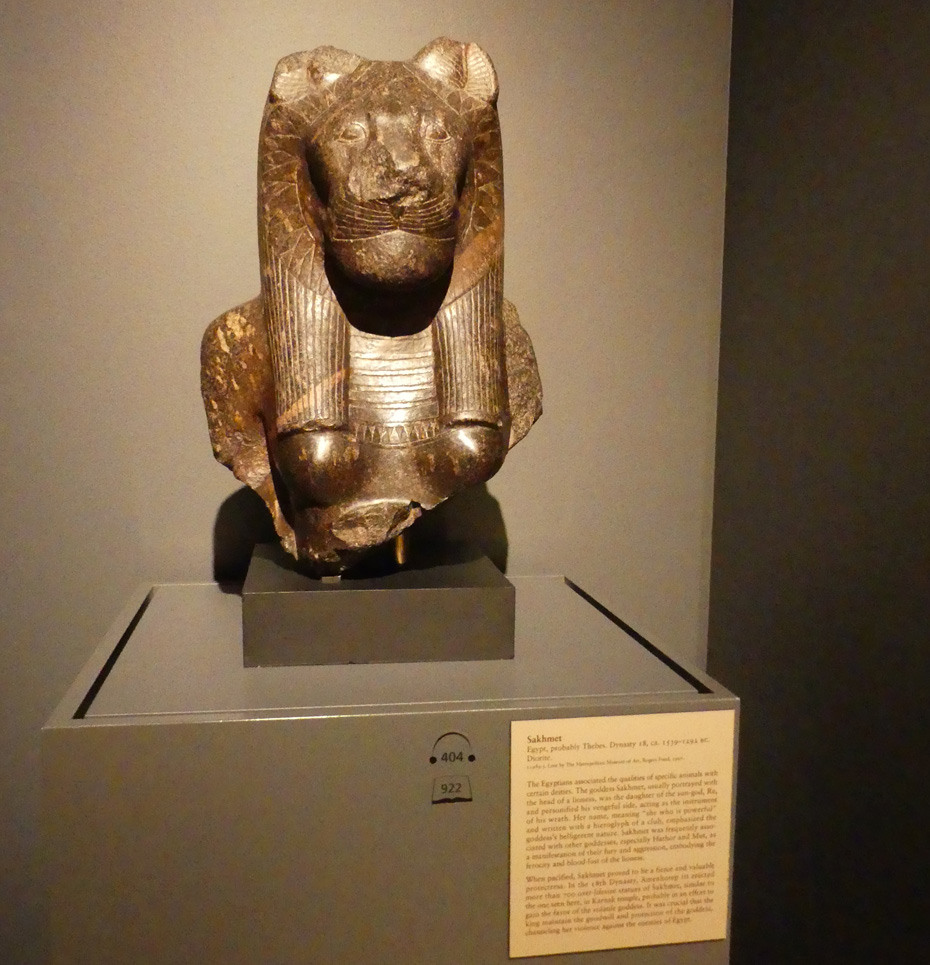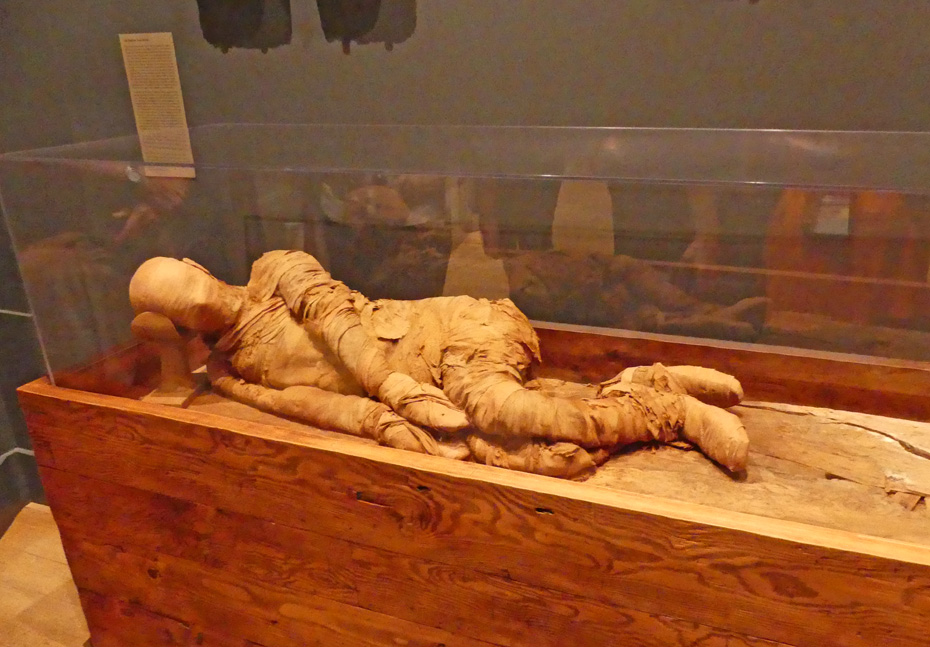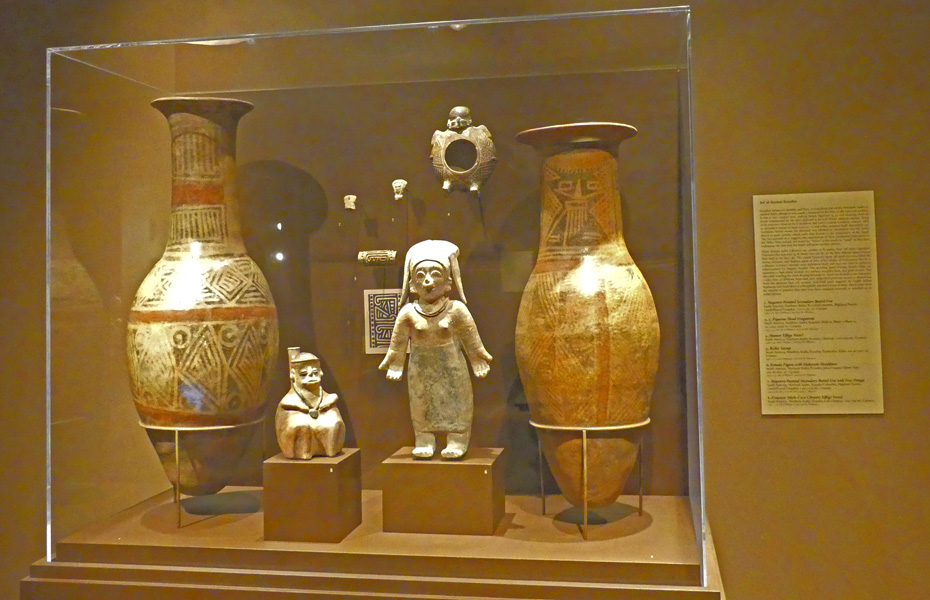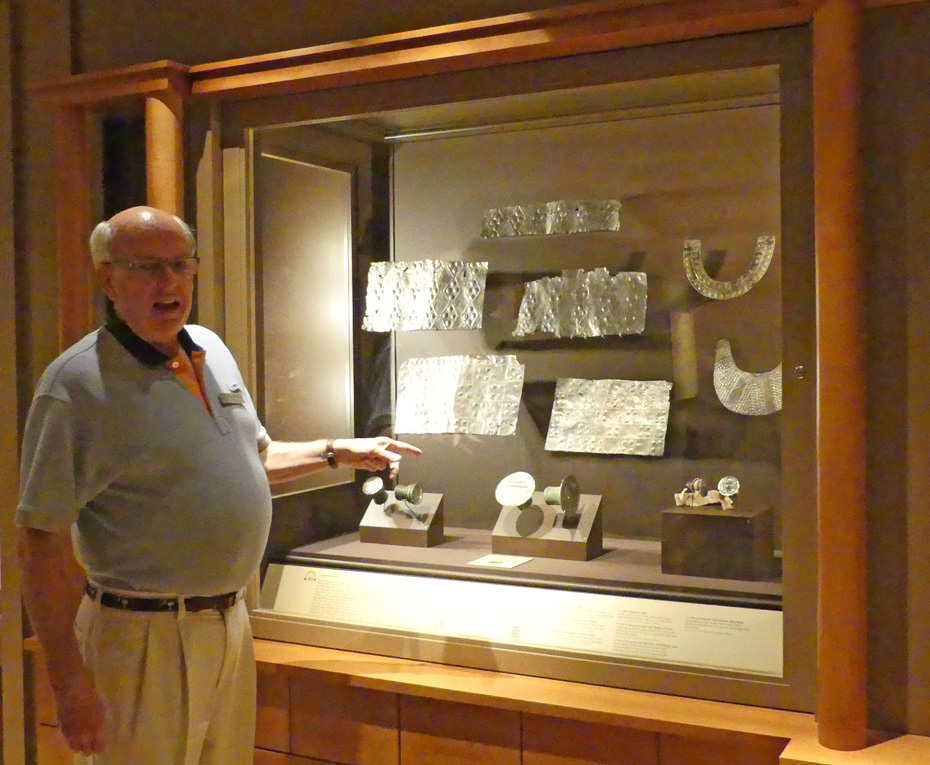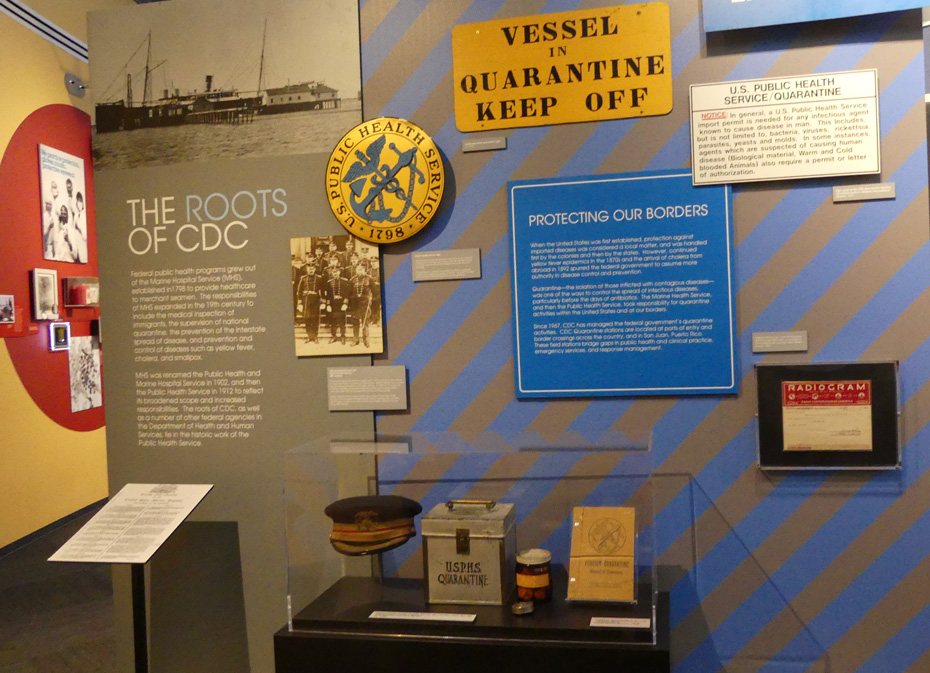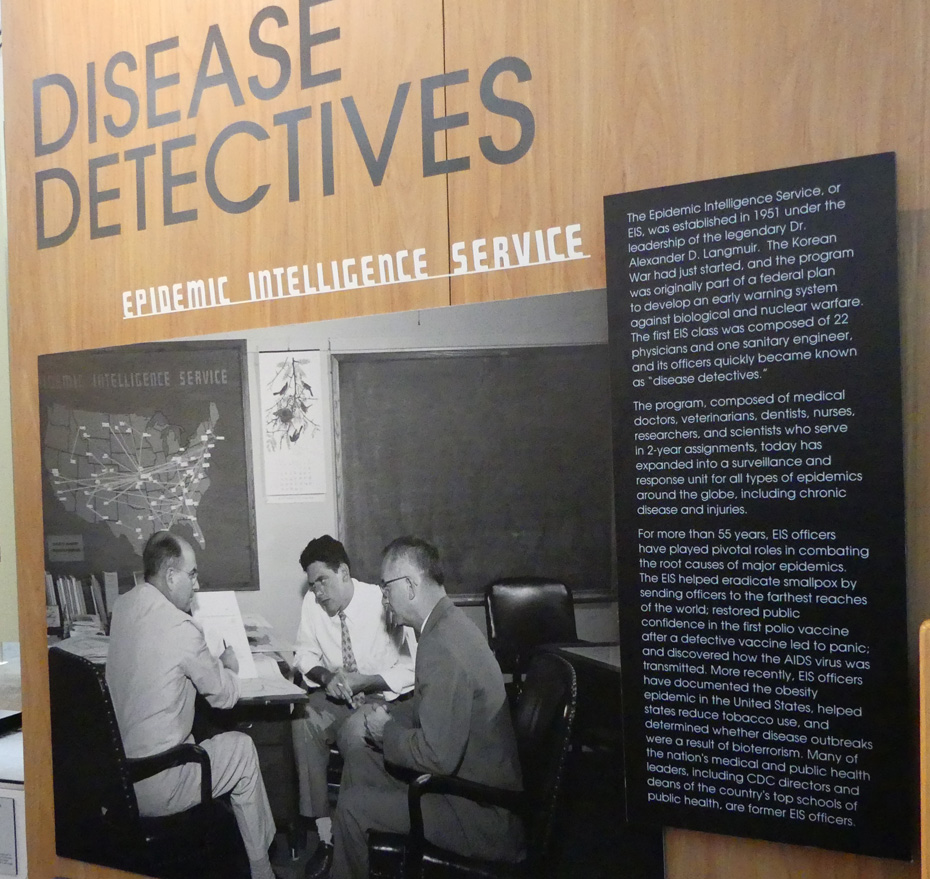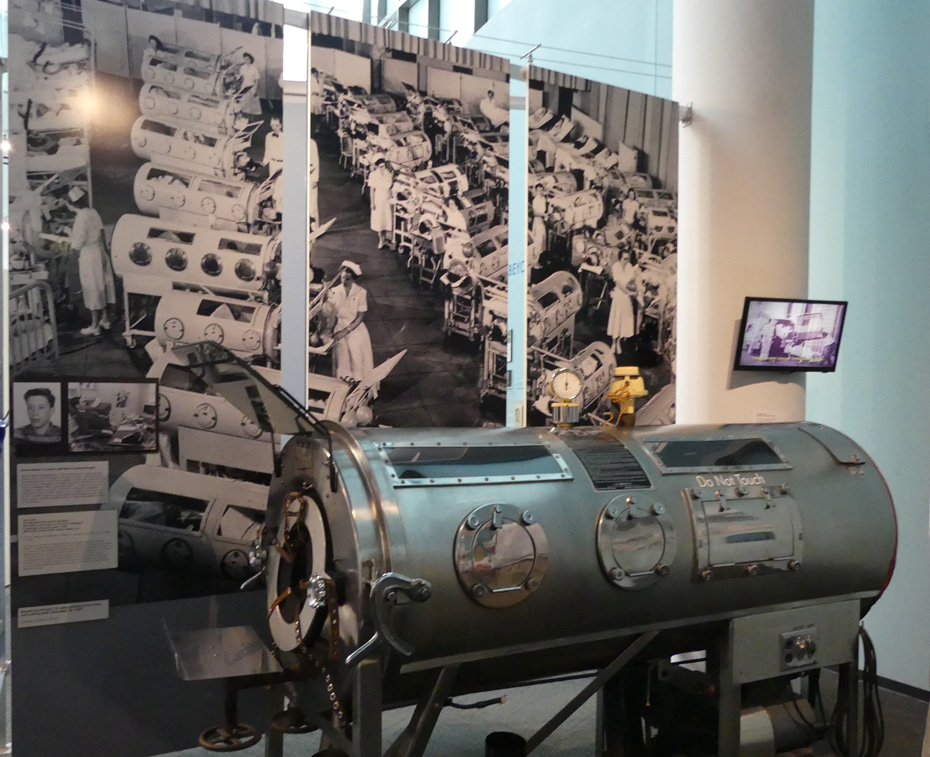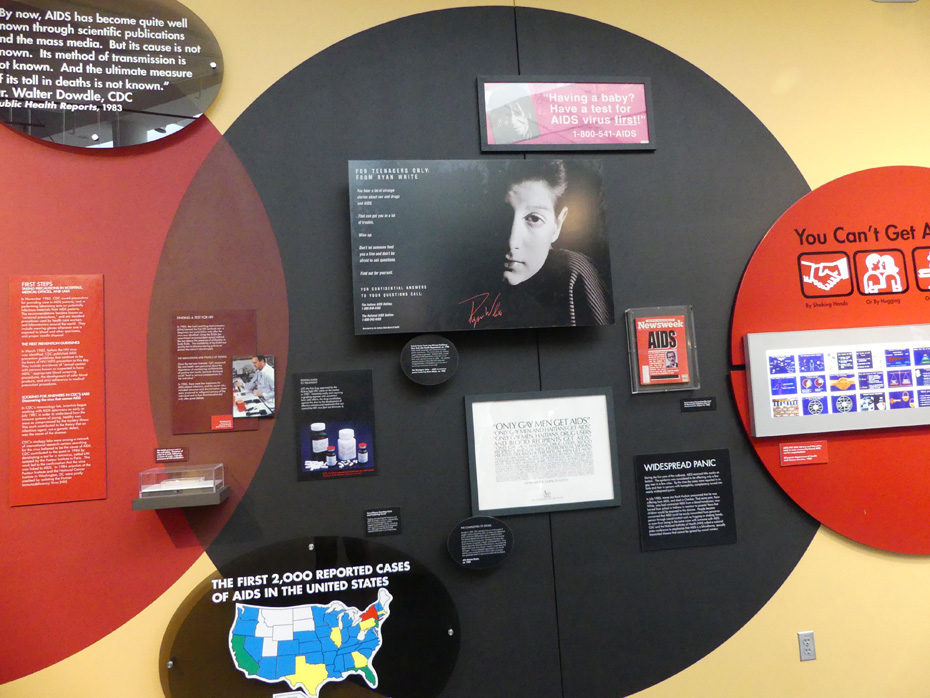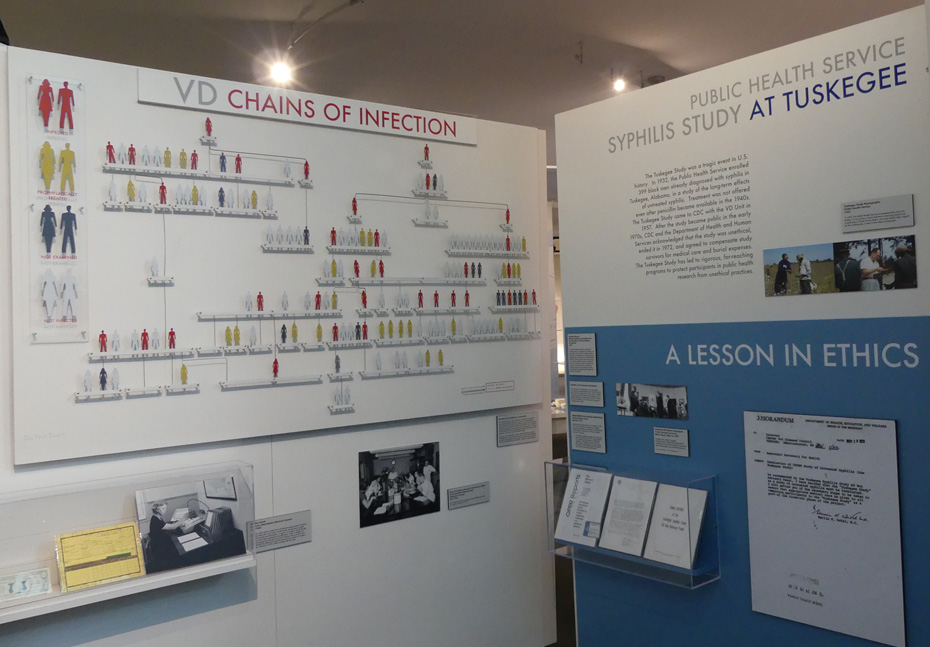
|
|
|
|
|
|
|
|
|
|
Michael C. Carlos Museum
Michael C. Carlos Museum is
located on Emory University's Atlanta campus. The current
museum began in 1919 but collections first began in 1876 when
a museum was formed on the original campus in Oxford, Georgia The current building dating to
1993 even contains its own laboratory. The museum is filled
with artwork from ancient Egypt, Nubia, and the Near East;
Greece and Rome; the Americas; Africa; and Asia. I didn’t have
time to dig into their papers dating from the
Renaissance to the present. In fact it’s hard to see the
entire museum in one visit.
My explorations began in the Greek
section explained as we traveled throughout by docent Michael
McDavid.
Here scenes from the Trojan War
on mosaics and classic Greek pottery mixed with statures. He
told us that Greek pottery is the finest ever made. The detail
is fantastic. One piece was a pithos of red clay
with carvings and multiple decorations on the top two thirds.
These were storage vessels where the bottom one third would be
sunk into the ground for stabilization. It would have been
used for maybe wine or olive oil Lots of detail for being what
we would consider utilitarian use like today's factory.
Much would have been broken in
pieces and reassembled after being excavating. Many of the
statures are missing heads and there are many heads with no
bodies but all of the artifacts are original. There are no
reproductions.
The Egyptian section was fascinating. We walked up the Nile via a drawing on the floor depicting the Egyptian country following the Nile. We got really close up with mummies from different eras. Also perused Egyptian art and sarcophagus or coffins where the mummies were placed. There is even a mummified dog, someone's beloved pet several thousand years ago. Cats were worshiped in Egypt so naturally there are many art objects with cats pictured.o:p>
Michael showed us one of the ten
oldest mummies still in existence, "We call him the Old
Kingdom Mummy because he lived and died during the earlier
period when Egypt was becoming a unified state." It's in
an airtight temperature controlled glass case not wrapped as
we normally see them in one tight bundle. Rather this one is
wrapped with each limb and part separate. We could even see
the outline of facial features. Michael explained the need for
preservation after the mummy was excavated. "This mummy was on
the verge of turning to dust about 15 or 20 years ago. Emory
has owned this mummy for over 100 years. It was a major
conservation project to preserve it."
For me it was amazing. Here were
the actual remains of a man who walked the earth over 4000
years ago. Questions that will never be answered flooded my
mind. Who was he? What were his dreams and ambitions in life?
Did his family once stand weeping and missing this same person
I am looking at today?
We moved into the Ancient
Americas section. From utilitarian objects like an Incan
digging stick since they had no animals capable of pulling a
plow prior to the arrival of the Europeans. Like the Egyptians
they had a complex belief related to the afterlife. Also they
too had many vases and art objects reflecting feline faces.
There were no domestic cats in the Americas then so the ones
depicted are usually the jaguar or other wild cat.
Jewelry was an important part of
their social status. They were called orejones or "big
ears" by the Spanish invaders because they wore such enormous,
impressive earrings. Many of these, called ear spools, that
are on display date to 300 years before the first European
contact. This is just a touch of the
treasures you will find at Michael C. Carlos Museum.
For more info:
hhttps://carlos.emory.edu
David J. Sencer
CDC Museum
The Center for Disease Control
might be the last place you expect a museum but it is both fun
and informative. It's a government facility so you need a
legal photo ID or for non-citizens, a passport to enter. Amy Kirby, a microbiologist for
the center, led us around. She told us, "I like to focus on
the creativity that goes into public health. I think a lot of
people think of science as being very exacting and the same
thing over and over. That is true but here at CDC we have to
be prepared for something new to land on our doorsteps so I
want to show you about a time that happened; the first
outbreak of Legionnaires Disease."
We watched a video as the news
unfolded about the American Legion members meeting in
Philadelphia where many became ill and some died. It showed
how the CDC investigated and studied all possible causes. The
field people investigated, the people back in the laboratory
looked for ways to put these facts together and come up with
an answer. It was found to be a brand new bacterium spread
thought the inhaling of water vapor traced in that case to air
condition using water cooling tanks. One interesting display traces
the roots of the CDC to the Marine Hospital Service
established in 1798 to care for merchant seamen. Its duties
grew to the inspection of immigrants and the prevention of
then common diseases like yellow fever, cholera, and malaria.
By 1902 it became the Public Health and Marine Hospital
Service which was shortened to Public Health Service in 1912.
In 1946 it became the Communicable Disease Center.
The displays range from simple
items like early 20th century quarantine sign, an early
uniform, and a sign on protecting your privy, to more
important items like Dr. Joseph Mountin’s microscope, an iron
lung, a early USPHS Quarantine box and so much more.
Amy walked us thought the
discovery of a polio vaccine, the eradication of smallpox,
studies on ebola, AIDS and Guinea worm, which the Jimmie
Carter Foundation has worked to eradicate. Incidentally she
informed us that one of the only two existing samples of the
smallpox virus is kept just a few hundred feet away here at
the CDC. The other is in Russia.
There is an exhibit on the ethics of science where it discussed the syphilis study on 399 African American men who had syphilis and were studied for long term effects and not given treatment even after penicillin was discovered in the 1940s. The results of that event caused protections to be put in place to protect subjects of health studies from unethical treatment. o:p> The museum can be visited for
free but be sure to have proper identification.
For more info:
hhttps://www.cdc.gov/museum/index.htm
Fernbank Museum
I could have spent many more hours
exploring these three museums.
We'd love your comments!
|
Connect with us on:
American Roads
and | ||||
|
Public Disclosure--
Please Read The FTC has a law requiring web sites to let their readers know if any of the stories are "sponsored" or compensated. We also are to let readers know if any of our links are ads. Most are not. They are just a way to direct you to more information about the article where the link is placed. We also have several ads on our pages. They are clearly marked as ads. I think readers are smart enough to know an ad when they see one but to obey the letter of the law, I am putting this statement here to make sure everyone understands. American Roads and Global Highways may contain affiliate links or ads. Further, as their bios show, most of the feature writers are professional travel writers. As such we are frequently invited on press trips, also called fam trips. On these trips most of our lodging, dining, admissions fees and often plane fare are covered by the city or firm hosting the trip. It is an opportunity to visit places we might not otherwise be able to visit. However, no one tells us what to write about those places. All opinions are 100% those of the author of that feature column. . |
|||||
|
Privacy Policy/ Archives /
Contributors /
Subscribe to
American Roads Books by
Kathleen Walls /
Contact /
Sponsor or Advertise/ American Roads & Global Highways Home Page
|
